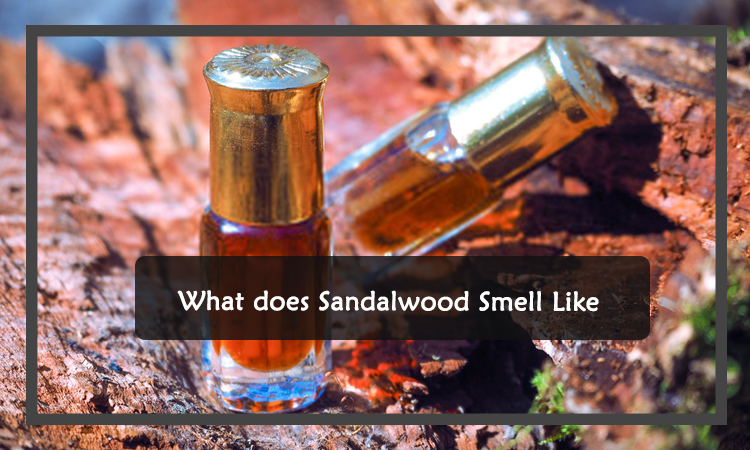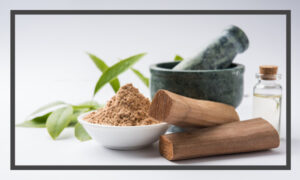What does Sandalwood Smell Like

When you hear about Sandalwoods, what is the first thing that comes to the top of your mind? Its charming fragrance, right? Yes, Sandalwood is mainly known for its aroma. However, it is a cultivated timber tree that produces oil and odors.
Depending on the type of wood, it can vary widely. Therefore, the sandal wood’s name also changes–for example, Red Sandalwood. In addition, its smell differs from Rosie to spicy.
Accordingly, the manufacturers have already started to take advantage of its smell by producing perfumes. In this article, we will learn more about its smell and other related details.
Where does Sandalwood Come From?
Sandalwood’s origin is the Santalum Album trees of Southern India. Thus, it was India where the Sandalwood was first produced. Later it spread all over the world. Now, it is available in Australia, Nepal, Bangladesh, New Caledonia, Indonesia, and China.
Though Sandalwood is produced in many parts of the world recently, Indian Sandalwood is of the best quality.
Sandalwood has to be at least 15 years old to yield woods. It is a lot of time, so Sandalwood is cited as one of the most expensive considering the prices of African Blackwood, Agarwood, Pink Ivory, and Ebony.
How does Sandalwood Smell?
The scent of Sandalwood is creamy, earthy, rich as well as exotic. Sometimes it also feels like a milky precious wood scent. It works exceptionally well with cedar, rosewood, vetiver, patchouli, and vanilla.
It also works as a fixative to floral and citrus smells. Though it has its beautiful subtle notes, it works wonderfully as a carrier for other aromas.
The sandalwood scent itself is excellent. Sandalwood has a deep, woody aroma and generally smells like a mix of floral, rich, soft, balsamic, and sweet accents. Its unique scent brought Sandalwood the fame of being a base note in many colognes and iconic perfumes.
This scent is complex, with some lavender, floral notes, patchouli, and plenty of powderiness. But, used as a splash, it’s too powerful and cloying!
To some people, the smell of Sandalwood is a classic scent from a valuable tree. Its sweet, soft scent makes us relaxed and drives away negative thinking, unconsciousness, and unclarity.

Why does Sandalwood Smell Attract Snakes?
There is a myth that snakes are attracted to Sandalwood because of its smell. The actual reason is something completely different. Trees with scents attract pollinators and other insects.
Thus, those trees become an excellent place for pollinators’ gathering. The snakes do not get attracted to the smell. Instead, they are attracted to the pollinators of Sandalwood trees.
Sandalwood as Oil
Various blends of sandalwood oils have different emphases on their advantages. However, regardless of what sandalwood blend you use, you’ll still reap all the benefits of aromatherapy.
Some Sandalwood oil brands have a basic Sandalwood essential oil that serves as a sedative with floral, wood, and honey notes. Other brands of basic sandalwood essential oils include PipingRock’s Sandalwood and Rocky Mountain Oil’s Essential blend.
Suppose you are thinking of exploring different sandalwood blends. In that case, you may want to look into Essential Oil Blend Meditative (which includes Frankincense) and Essential Oil Blend Nostalgic (which is a spicy scent ideal for meditation).
Sandalwood as a Medicine
With a scent that encourages concentration and calmness in meditation and diuretic properties, which aids in eliminating toxins, Sandalwood purifies the toxins and helps develop a soothing fragrance.
Its oil is used as an antiseptic for treating headaches, stomachaches, and urinary and genital problems. It can also have an impact on overall well-being and mental health and helps in improving the same.
In addition, it is a detoxifying agent and natural healer. So, it is worth it to use Sandalwood as scents.
Improves Relaxing Capabilities
Sandalwood aromatherapy eases your brain waves by its calming and relaxing mechanisms. Sandalwood is famous for calming your mind and body.
It can also put you in a meditative state where you may find spiritual calm. It is considered a natural healing option for those who may have panic attacks, depression, and nervousness because of these properties.
Maybe you work in an office and desire to feel relaxed and have mental clearance, and at peace after the hassles of your hectic day. The Sandalwood can help you to do so.
Sandalwood aromatherapy also provides you with other physical health benefits. Besides giving inner peace of mind, this aromatherapy is perfect for those who have insomnia because this therapy has some sedative effects. However, its sedative effects don’t stop there.
These sedative effects are known to treat migraines and headaches. In addition, you can apply sandalwood oil essential to your body as an anti-inflammatory and anti-bacterial agent, or you can use it in your bathtub for a relaxing, scented bath if you want to try the sandalwood essential oil by itself.
Facts You Must Consider before Using Aromatherapy
Without any irritation to your skin, you can get all the benefits of Sandalwood. However, there is a possibility of feeling irritated if you expose the Sandalwood essential directly on your skin.
Aromatherapy saves you from this irritation by allowing you to enjoy a relaxing experience. There are tons of beautiful diffusers you can use for aromatherapy.
It works as both a diffuser and humidifier so that you can get the benefits of both in one product. In addition, it can be used as a perfect diffuser for any household because of its simple white design.
You can look for sandalwood essential oils with high levels of Santalol, specifically around 90%, to ensure the benefits of sandalwood aromatherapy.
However, you must consider that there are so many synthetic products on the market. It is important to note, as a consumer, that the benefits of sandalwood aromatherapy are not 100% scientific.
However, medicinal uses and traditional religion coupled with the public’s experiences with sandalwood aromatherapy conveys the message that there are real benefits to this practice.
You can try it yourself if you are wondering about the pros and cons of actual sandalwood aromatherapy.
Sandalwood in Different Cultures
Sandalwood doesn’t end with its fragrance. It leaves a religious meaning behind and is used for various religions. In Sanskrit, Sandalwood is known as “Chandana.”
The sandal is considered sacred in Hindu Ayurveda. The wood is even used for worshiping Shiva. Moreover, Hindus prefer utensils made of Sandalwood in different ceremonies and rituals because of their fragrance and sacredness.
It is one of the mainly used holy elements in Vedic society too. Other than Hinduism, Sandalwood is an integral part of Jainism, Buddhism, Sufism, Zoroastrianism, and East Asian Religion practice.
Conclusion
Now, you not only know about smells but also the origin and uses of Sandalwood. Additionally, chemists are inventing new ways to leverage its scent besides using it in perfumes.
As a result, we may see new uses of this expensive wood in the future. Though that is unknown to you, you acquired detailed information about aroma smell from this article.


Leave a Reply